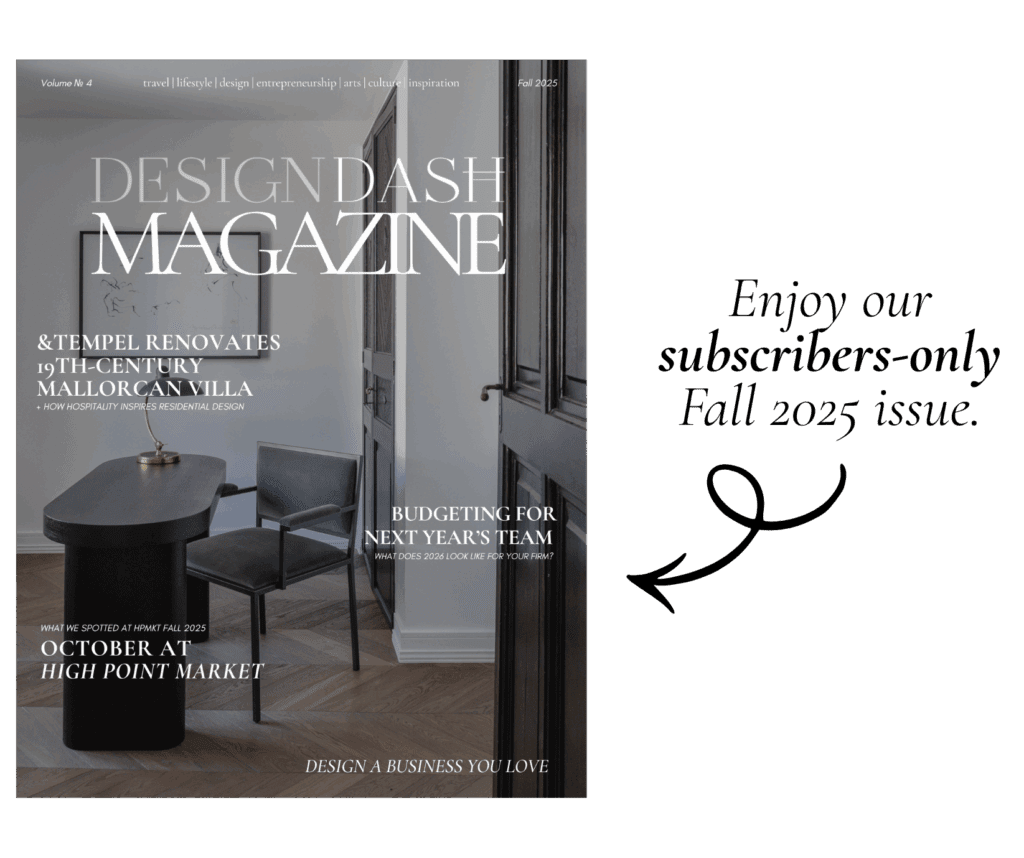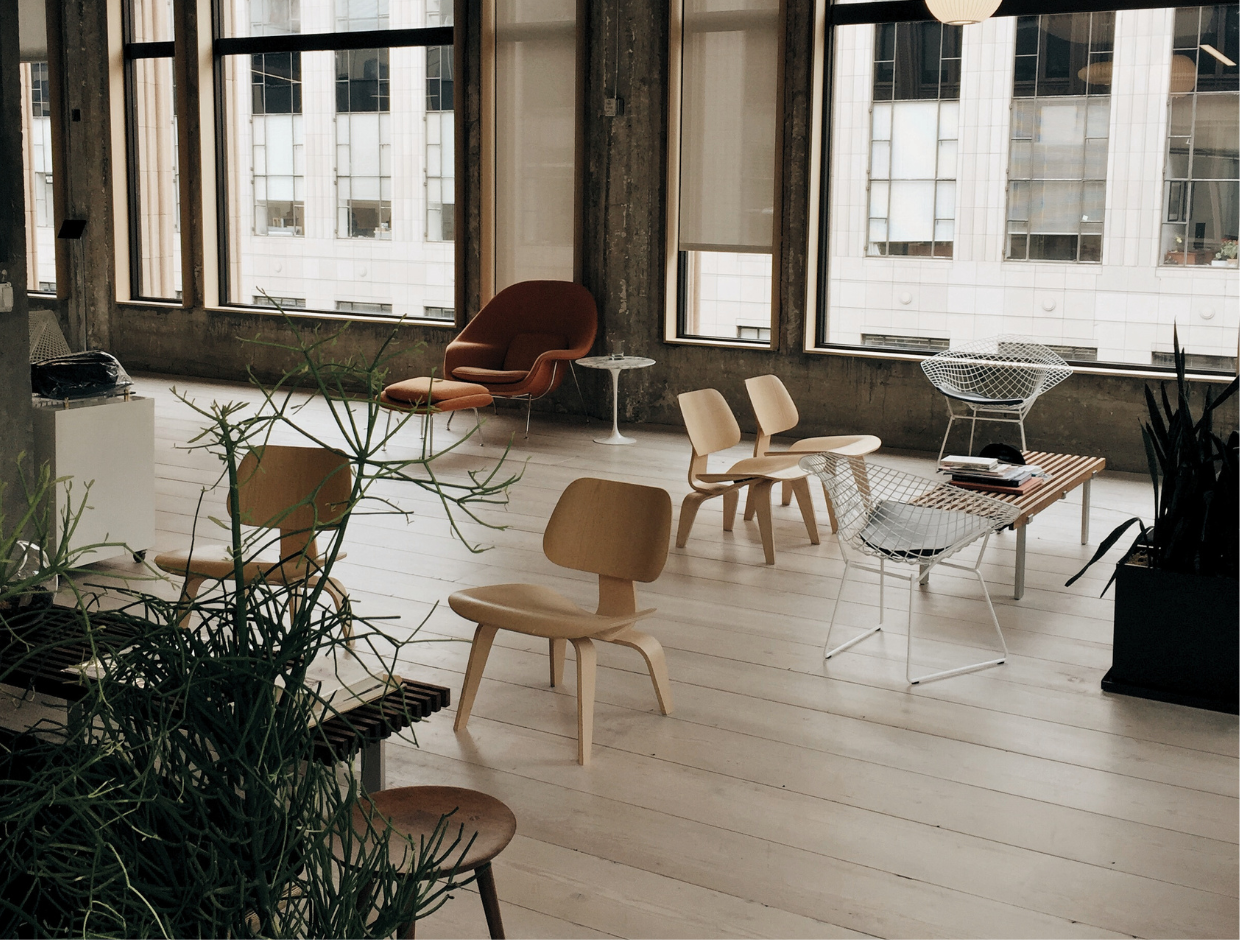
What Are Billable vs. Non-Billable Hours in Interior Design?
Summary
Not all hours in an interior design firm are created equal. Billable hours include design work, sourcing, client meetings, and site visits—anything directly advancing a client’s project. Non-billable hours are the behind-the-scenes costs of running your firm, like marketing, internal meetings, and staff training. Travel time and overlapping client calls live in the gray zone, where policies vary. The key is to define expectations clearly in contracts, set boundaries, and enforce them consistently so clients respect your time—and you keep more of what you earn.
Reflection Questions
How clearly do I (and my team) distinguish between billable and non-billable hours right now?
Am I unintentionally undervaluing my work by absorbing tasks that should be billable?
How confident am I in explaining my billing policies to clients—and do my contracts back me up?
Journal Prompt
Reflect on a recent project where you questioned whether certain hours should be billed. How did you handle it, what was the client’s response, and what changes could you make to your contracts or systems to avoid that uncertainty next time?
Every firm owner has wrestled with this at some point: you’re knee-deep in a project, toggling between drawings, sourcing trips, vendor calls, and late-night proposal tweaks, and you stop and think… wait, is this time billable?
That line can easily blur. And when it’s blurry, trouble usually follows. Some firms end up undercharging and running on razor-thin margins. Others over-service; they give clients more time than they ever agreed to. Either way, you’re slowly training clients to undervalue the work, even as you’re draining your own resources.
Interior design involves a mix of creative labor, client handholding, and behind-the-scenes operations. Some of those hours are clearly part of the service. Others are just the cost of running a business. And then there’s that gray zone in the middle (travel time, for example); on that, there’s no clear industry standard. Let’s take a closer look at which activities qualify as “billable” and which should be left off your client’s next invoice.
Billable vs. Non-Billable Interior Design Hours
Billable: The Design Work Itself

This one sounds obvious, but you’d be surprised how many firms undercount it. Concept development, drawings, renderings, sourcing, creating specifications… all of it is billable. This is what clients are paying for directly: your taste, your judgment, your professional skill.
However, many designers leave time off the clock because it doesn’t “feel” like work. That hour scrolling through lighting vendors after dinner? Still work. The sketch you make on trace paper during a client call? Work. The sample board you tweak for the third time because the first marble slab got discontinued? Definitely work.
If you’d have to hire someone else to do it in your place, then it belongs on an invoice. Period.
Billable: Client Meetings and Site Visits

Face time with a client is not “just part of the relationship.” It’s labor. Whether you’re presenting a scheme in your office, walking them through a showroom, or pacing around a job site to catch errors before they become disasters, that’s billable.
If you’re spending hours explaining design intent to a contractor or troubleshooting with a cabinetmaker on site, that’s as essential as the design plans themselves. Don’t give it away for free.
Non-Billable: Marketing Your Firm

Say you spend hours reworking your website, polishing Instagram posts, setting up a newsletter, even emailing editors to pitch your work. Those hours are real and exhausting, but they are not client-facing. They’re the cost of doing business.
That doesn’t mean marketing is optional. In fact, most thriving firms pour a staggering amount of time into it. But it’s overhead, not project labor. Trying to slip those hours into a client invoice is a surefire way to lose trust. Track them internally to understand your full workload, yes, but keep them separate from client billing.
Non-Billable: Internal Team Meetings

That Monday morning workload check with your junior designer? Non-billable. The Friday brainstorming session about where the firm should head in five years? Non-billable.
These meetings are important. They keep everyone aligned and help you spot bottlenecks before they become disasters. But they’re inward-facing. They exist to keep your studio healthy, not to move one client’s project forward.
Plenty of owners are shocked when they start tracking and realize how many hours each week are absorbed by internal chatter. It adds up fast. And it should never be charged back to a client.
Non-Billable: Staff Training and Education

Your junior designer spends two days in a Revit training course. You sit in on a lunch-and-learn from a lighting rep. Someone reads through the latest code changes before a condo project kicks off. All of this is valuable. But it’s not billable.
Clients benefit indirectly, of course. A more educated staff means smoother projects. But unless the training is specific to their job (say, onboarding your team to a proprietary project management system only used for their build), then it’s your investment in the firm. Not their expense.
Fuel your creative fire & be a part of a supportive community that values how you love to live.
subscribe to our newsletter
*please check your Spam folder for the latest DesignDash Magazine issue immediately after subscription

The Gray Area: Travel Time

This is the one that always stirs debate: do you bill clients for the hours you spend getting to them? Some designers say yes without hesitation. Others treat it as part of doing business. Most fall somewhere in the middle.
In an article for Business of Home, Toronto designer Colette van den Thillart tells Haley Chouinard, “I have always charged for travel time, as it’s part of the hours spent on the job, and we bill hourly—so, time is money!” She explains that she charges her normal rate for local drives and a flat fee for flights, which is usually less than the actual hours spent but enough to acknowledge that a whole day is tied up. Lauren Lerner in Arizona takes a similar view; she bills the entire day when flying out for work. Others, like Mark Lavender in Chicago, soften it with reduced rates or fold travel into allowances agreed on upfront.
There isn’t one “standard.” The only thing most designers agree on is that ignoring travel altogether doesn’t make much sense. A two-hour commute or a full day of flights is time you’re not spending on another project. And clients usually understand that if you set the expectation in their contract. The awkward part is when you don’t and you end up eating the cost because you never defined whether those hours count.
The Gray Area: When Client Hours Overlap

If you’re driving to Client A’s site and Client B calls, the “honest” answer is that the hour is billable to Client A. The trip is for their project. The call with Client B is incidental, and usually not something you’d bill separately. Charging both clients for the same stretch of time doesn’t make sense unless two designers (or other staff) are working at the same time.
That said, you don’t have to ignore the value. Many designers treat those on-the-road calls as goodwill; they’re part of the service culture that makes a client feel taken care of. You could also log it internally as non-billable but note the frequency. If you’re spending three hours a week troubleshooting for Client B while technically “off the clock,” maybe the bigger issue is that the scope of their project isn’t defined tightly enough.
In other words, one-off calls while driving? Let them go. But if it’s happening often, it’s worth revisiting the contract and deciding whether some of that “informal” support should shift into the billable column.
Tips for Defining This in Contracts

Everything must be clearly defined. If your agreement is vague, clients assume everything is included. That’s when you end up in awkward debates about whether a three-hour site visit or ten hours of furniture sourcing should be billed.
Protect yourself right off the bat. Spell out your rate and list the categories of work included: design hours, project management, site visits, travel (if applicable). Then, when questions arise, you’re pointing to an agreed policy, not scrambling for explanations.
Set Boundaries to Keep More of What You Earn
Clients may not need to see the whole breakdown, but they do need to know where the line is. When you enforce that line with consistency and confidence, they respect it. They may even appreciate the structure because it makes the project feel more professional.
And when you’re unsure what’s fair? Don’t reinvent the wheel all by yourself. Ask other firm owners how they handle it. Inside the DesignDash Community, designers talk candidly about what they bill, what they absorb, and where they’ve been burned. Sometimes, just hearing “yes, we all struggle with that too” makes it easier to draw the line.











